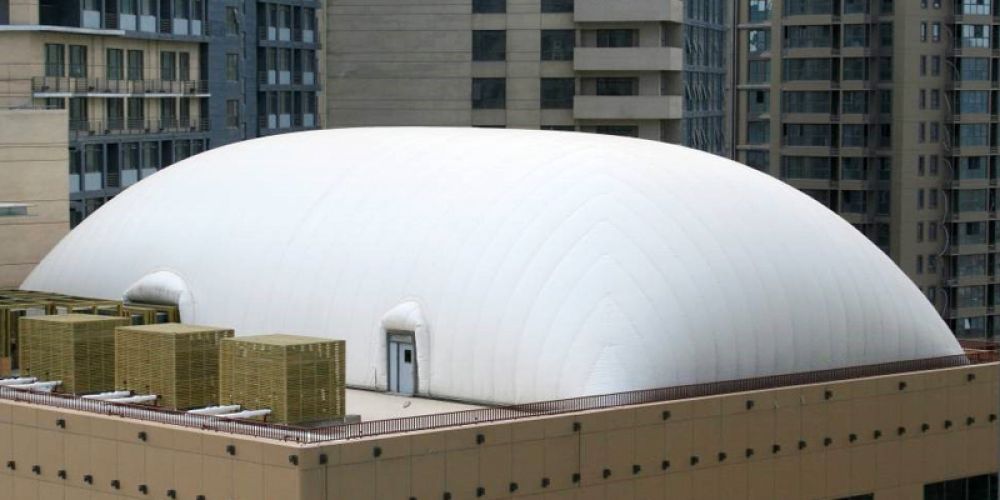Service Life and Advantages of Air-Supported Membrane Structures
The service life and advantages of air-supported membrane structures can be summarized as follows:
I. Service Life
The service life of air-supported membrane structures is primarily influenced by material quality, manufacturing processes, usage environment, and maintenance.
-
Materials and Manufacturing Processes
- Air-supported structures typically use high-quality membrane materials with excellent tensile strength, tear resistance, and weather resistance, ensuring stable performance across various environmental conditions. Some high-performance membranes can last over 30 years.
- Continuous innovations in manufacturing—such as multi-layer structural design, specialized adhesives, and advanced welding techniques—have significantly enhanced the durability and stability of these structures.
-
Usage Environment
- Harsh environments (e.g., high winds, sandstorms, or intense UV exposure) accelerate membrane aging, shortening service life. Conversely, in mild climates with minimal pollution, membranes tend to last longer.
-
Maintenance
- Regular maintenance is critical to extending service life. Key practices include cleaning surface debris, repairing damaged areas, and inspecting anchoring systems. With proper routine maintenance, air-supported structures can achieve a lifespan of 20–30 years or more.
II. Advantages
Compared to traditional buildings, air-supported membrane structures offer the following benefits:
-
Lightweight Design
- The use of lightweight materials reduces the building’s weight and foundation load requirements, simplifies construction, and shortens project timelines.
-
Energy Efficiency and Sustainability
- The materials and design effectively isolate indoor and outdoor temperature/humidity differences, lowering energy consumption for heating, cooling, and ventilation.
- Membranes are recyclable, non-toxic, and environmentally friendly.
-
Flexibility and Adaptability
- These structures can be customized for diverse applications (e.g., commercial exhibitions, sports arenas, warehouses) and easily expanded or reconfigured as needed.
-
Cost-Effectiveness
- Construction costs are typically lower than traditional buildings due to simplified materials and labor requirements, enabling faster project completion.
-
High Safety Standards
- Materials undergo rigorous testing for durability, waterproofing, and fire resistance, meeting strict safety standards.
- The lightweight, flexible design minimizes damage from natural disasters like earthquakes.
Conclusion
With their extended service life and multifaceted advantages, air-supported membrane structures represent a promising and innovative architectural solution with broad application prospects.
